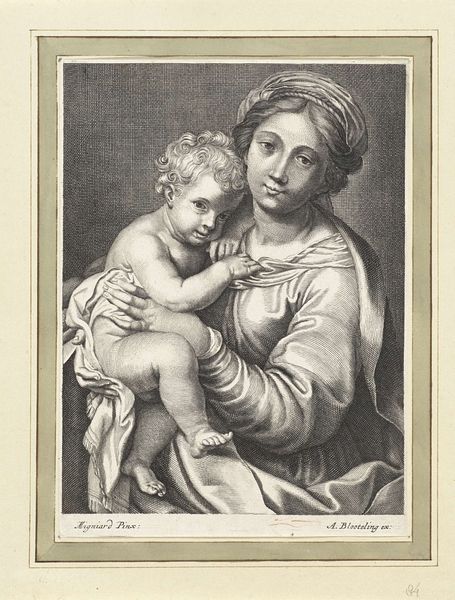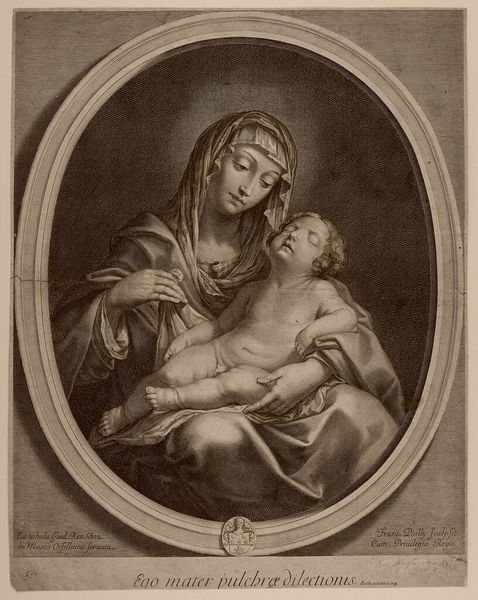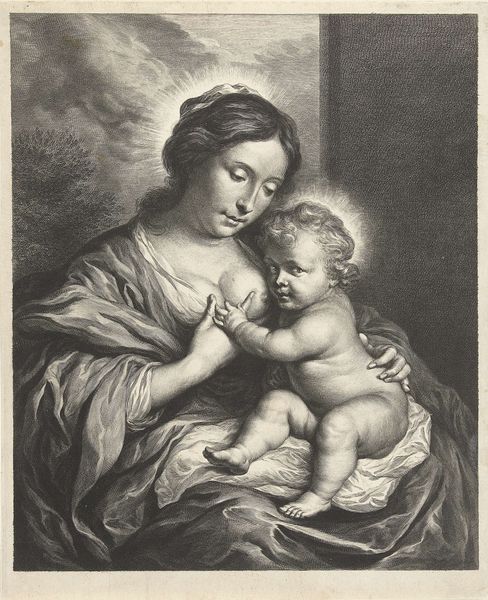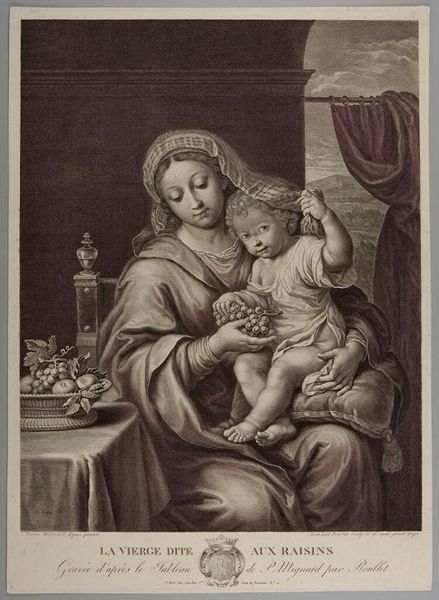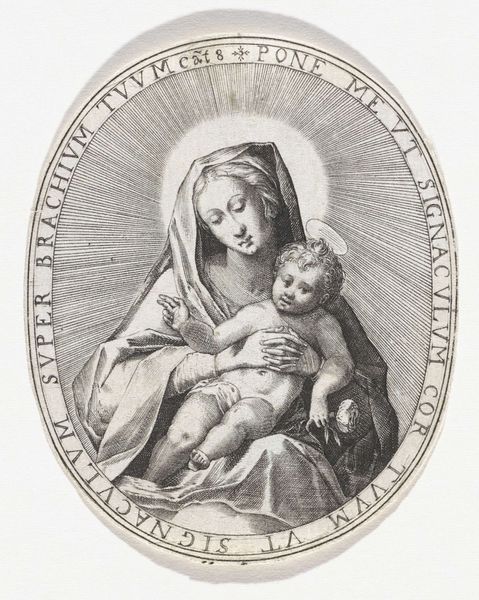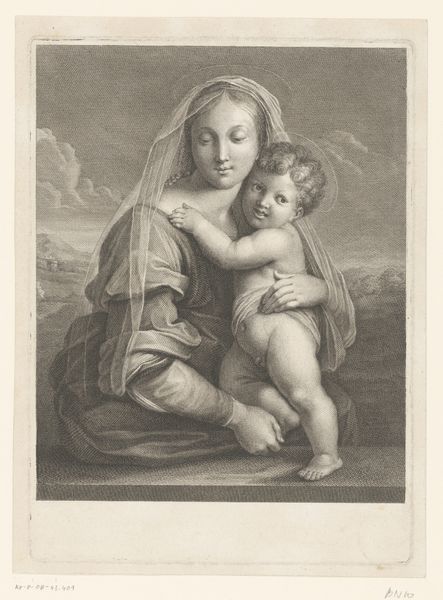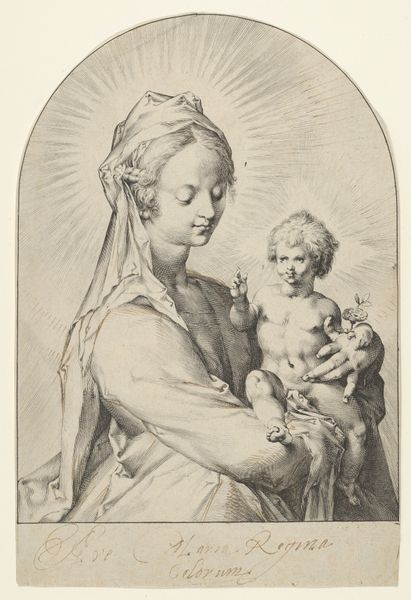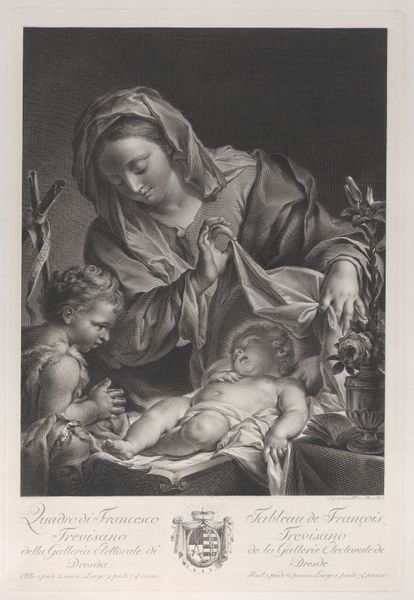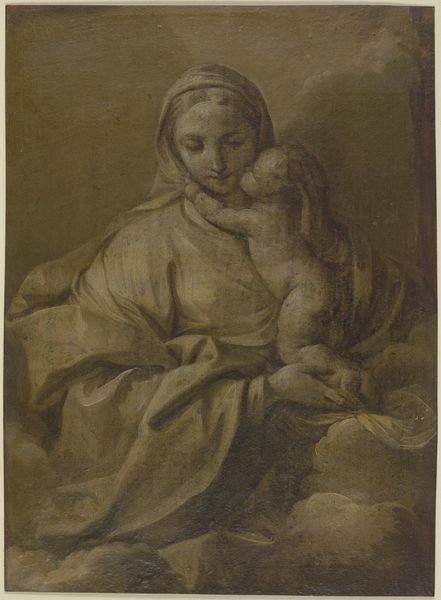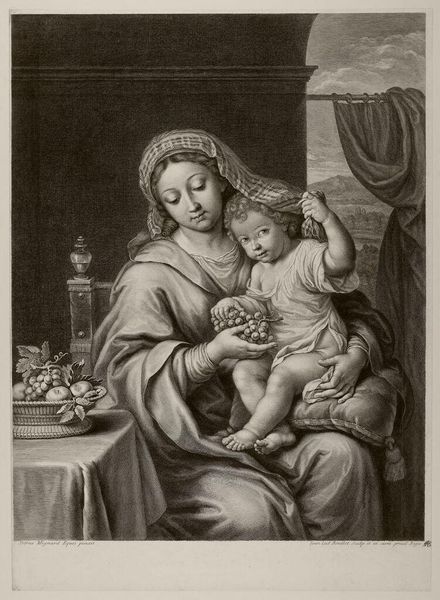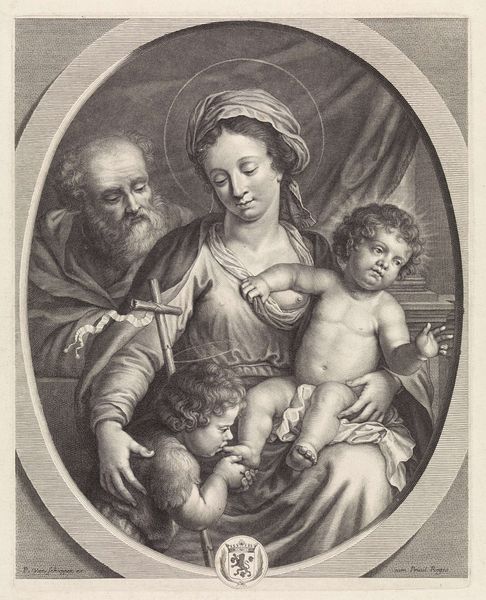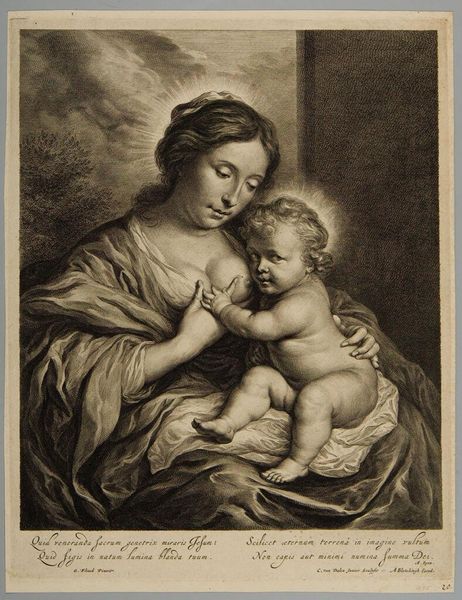
drawing, print, engraving
#
portrait
#
drawing
# print
#
figuration
#
italian-renaissance
#
engraving
Dimensions: Sheet (Trimmed): 15 in. × 11 1/4 in. (38.1 × 28.5 cm)
Copyright: Public Domain
Curator: Welcome to this presentation of "Virgin and Child," an engraving by Lorenzo Lorenzi, made sometime between 1745 and 1779, now part of the Met's collection. Editor: Immediately, I'm struck by the tender expression on the Virgin Mary's face. The engraver’s skill is remarkable; it seems to capture a delicate emotional connection with the child, Jesus. Curator: It's interesting to note how this engraving engages with earlier Italian Renaissance models of the Madonna and Child. Notice the idealized beauty, the oval format, and the subtle use of light and shadow typical of that period, it really situates it within a specific artistic lineage and market of imagery. Editor: I see the Renaissance influence, definitely, but the level of intimacy presented feels quite human for that type of religious piece. Mary is looking outward, and slightly downward at the viewer. Almost a demand to connect, a challenge that transcends the historical distance, that's her public role right? I keep wondering how it functions, and whom it served in that particular moment? Curator: That outward gaze might also suggest the public function these images played during the Enlightenment, reminding viewers of societal ideals concerning family and motherhood promoted at the time. And of course, as an engraving, it speaks to the expanding reach of printed images in the 18th century. Editor: The child Jesus’ hand placement strikes me as intentional too; very small yet holding on to Mary. Is he holding Mary, or is Mary supporting the boy, there? Curator: An insightful observation! Consider the conventions and symbolism the artist draws on—motherhood and divinity being central. Editor: Yes, but can we see the role of gender within religious imagery as potentially more complex than just an endorsement of motherhood? Like questioning assumptions of passive female virtues for active engagements in identity? The artwork offers us a historical view, but can also foster our engagement with modern issues of representation and politics, it has to be active, I think. Curator: Indeed, by placing "Virgin and Child" in its historical context, we begin to realize how it's actively part of art history and our broader cultural conversation today. Editor: Absolutely, it makes you consider where and how those themes continue to resonate, evolve, or are challenged in contemporary art and discourse. Thank you.
Comments
No comments
Be the first to comment and join the conversation on the ultimate creative platform.
